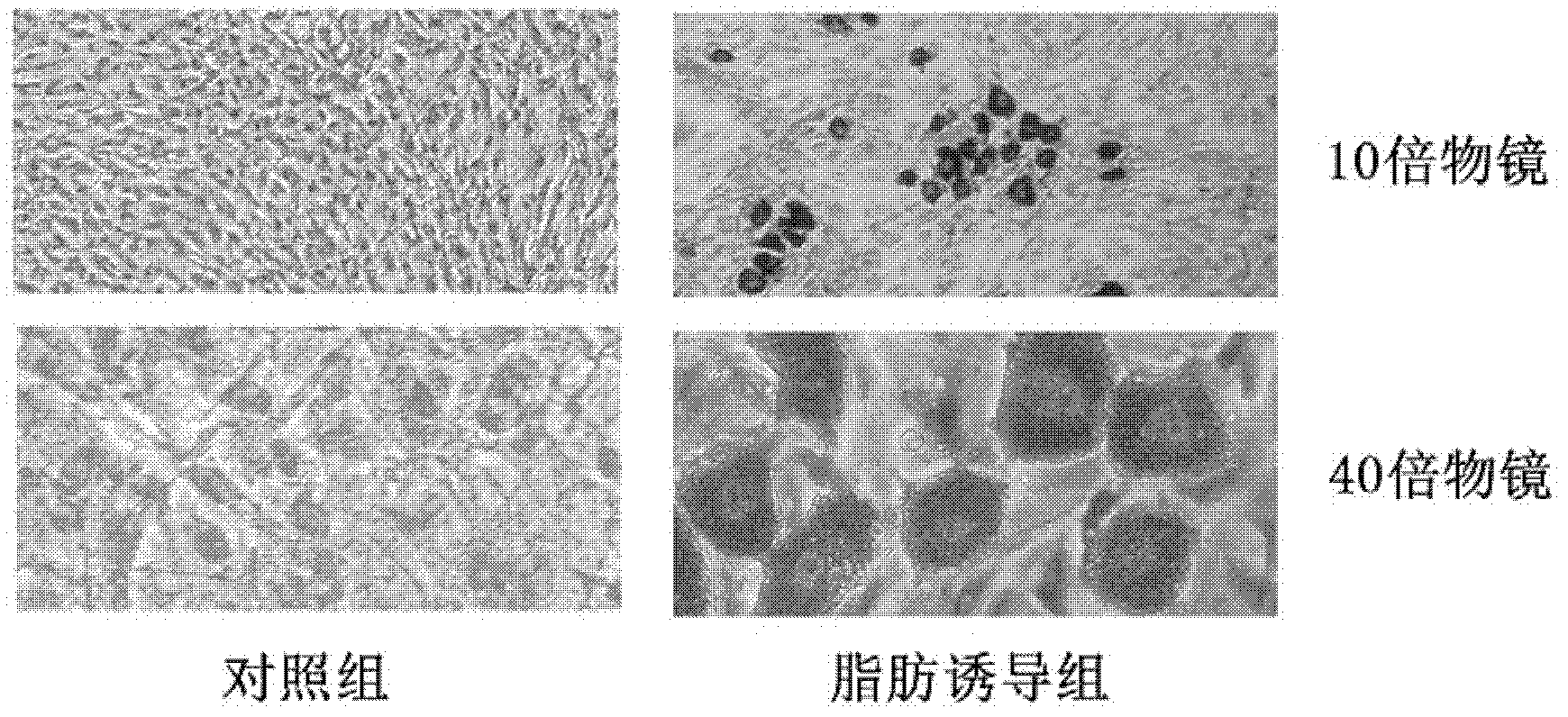Method for extensive amplification of cell line and mesenchymal stem cell in vitro
A technology of mesenchymal stem cells and cell lines, applied in the field of expanding cell lines and mesenchymal stem cells, can solve the problems of limited number of umbilical cord mesenchymal stem cells and failure to achieve clinical application, and achieve easy measurement and monitoring, cost saving, Simple operation effect
- Summary
- Abstract
- Description
- Claims
- Application Information
AI Technical Summary
Problems solved by technology
Method used
Image
Examples
Embodiment 1
[0041] Embodiment 1: (the following percentages are mass percentages)
[0042] Taking the African green monkey cells (COS1) as the object cells, the microcarrier culture was tried and finally compared with the total amount of cells that can be obtained by normal cell culture flask culture.
[0043] 1) Microcarrier treatment: Weigh 0.1g of microcarrier magnetic beads into a 50ml centrifuge tube, add 40ml of PBS to wash once, let it stand until all the magnetic beads have settled to the bottom, then gently suck out the PBS and then add 40ml of PBS to hydrate at 4°C for 3 hours . The hydrated microcarriers were sterilized by high-temperature steam at 121° C. for 30 minutes. The finally obtained microcarriers were soaked in 40ml of PBS for use.
[0044] 2) COS1 cell inoculation: After fully mixing the microcarrier mother solution, pipette 0.1 ml into 5 ml of DMEM medium and mix for use. The recovered COS1 cells were divided into 1*10 5Inoculate in 5ml DMEM medium (10% FBS / 1% d...
Embodiment 2
[0048] Rat adipose-derived mesenchymal stem cells (rADSC) were used as the target cells to try microcarrier culture and finally compared with the total amount of cells that can be obtained from normal cell culture flask culture, and the state of the cells was further detected by inducing differentiation of the obtained cells .
[0049] 1) Microcarrier treatment: Weigh 0.1g of microcarrier magnetic beads into a 50ml centrifuge tube, add 40ml of PBS to wash once, let it stand until all the magnetic beads have settled to the bottom, then gently suck out the PBS and then add 40ml of PBS to hydrate at 4°C for 3 hours . The hydrated microcarriers were sterilized by high-temperature steam at 121° C. for 30 minutes. The finally obtained microcarriers were soaked in 40ml of PBS for use.
[0050] 2) Isolation of rADSC: Obtain 1.5g of fat from the groin of 6-week-old Wistar rats under clean conditions; cut the adipose tissue into about 1cm with dissecting scissors 3 Large and small fr...
Embodiment 3
[0060] Taking African green monkey cells (COS1) as the target cells to try to use microcarriers for large-scale culture:
[0061] 1) Microcarrier treatment: Weigh 0.1g of microcarrier magnetic beads into a 50ml centrifuge tube, add 40ml of PBS to wash once, let it stand until all the magnetic beads have settled to the bottom, then gently suck out the PBS and then add 40ml of PBS to hydrate at 4°C for 3 hours . The hydrated microcarriers were sterilized by high-temperature steam at 121° C. for 30 minutes. The finally obtained microcarriers were soaked in 40ml of PBS for use.
[0062] 2) COS1 cell inoculation: After fully mixing the microcarrier mother solution, pipette 0.1ml and add it to 4ml DMEM medium, mix and set aside. The recovered COS1 cells were divided into 1*10 5 Inoculate in 5ml DMEM medium (10% FBS / 1% double antibody) at a density of / ml, aspirate and discard the liquid in the microcarrier tube, add the cell suspension to the microcarrier, mix well and put it in ...
PUM
 Login to View More
Login to View More Abstract
Description
Claims
Application Information
 Login to View More
Login to View More - R&D
- Intellectual Property
- Life Sciences
- Materials
- Tech Scout
- Unparalleled Data Quality
- Higher Quality Content
- 60% Fewer Hallucinations
Browse by: Latest US Patents, China's latest patents, Technical Efficacy Thesaurus, Application Domain, Technology Topic, Popular Technical Reports.
© 2025 PatSnap. All rights reserved.Legal|Privacy policy|Modern Slavery Act Transparency Statement|Sitemap|About US| Contact US: help@patsnap.com



